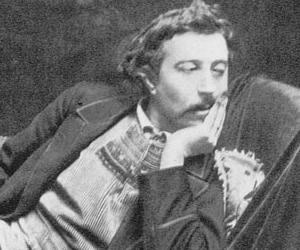Gauguin was born in Paris, the son of a journalist. He began his career in the merchant navy and then in 1871 became a stockbroker; he also took up painting. His early works are influenced by Pissarro, with whom he worked in 1879 and 1881.
He showed works in the later Impressionist exhibitions (1880-6), subsequently developing the style known as Synthetism during visits to Pont-Aven in Brittany (1886-90). In 1888 he worked briefly with Van Gogh in Arles.
Gauguin was faced with increasing poverty after retiring from stockbroking in 1883 and in 1891 he left Paris to work in Tahiti, where many of his most famous paintings were produced ('Nevermore', 1897, London, Courtauld Institute Galleries). He returned to Paris in 1893, but in 1895 went back to the South Seas and in 1901 moved to the Marquesas Islands, where he died.
Public recognition of his talent came posthumously with an exhibition of his work in Paris in 1906.
